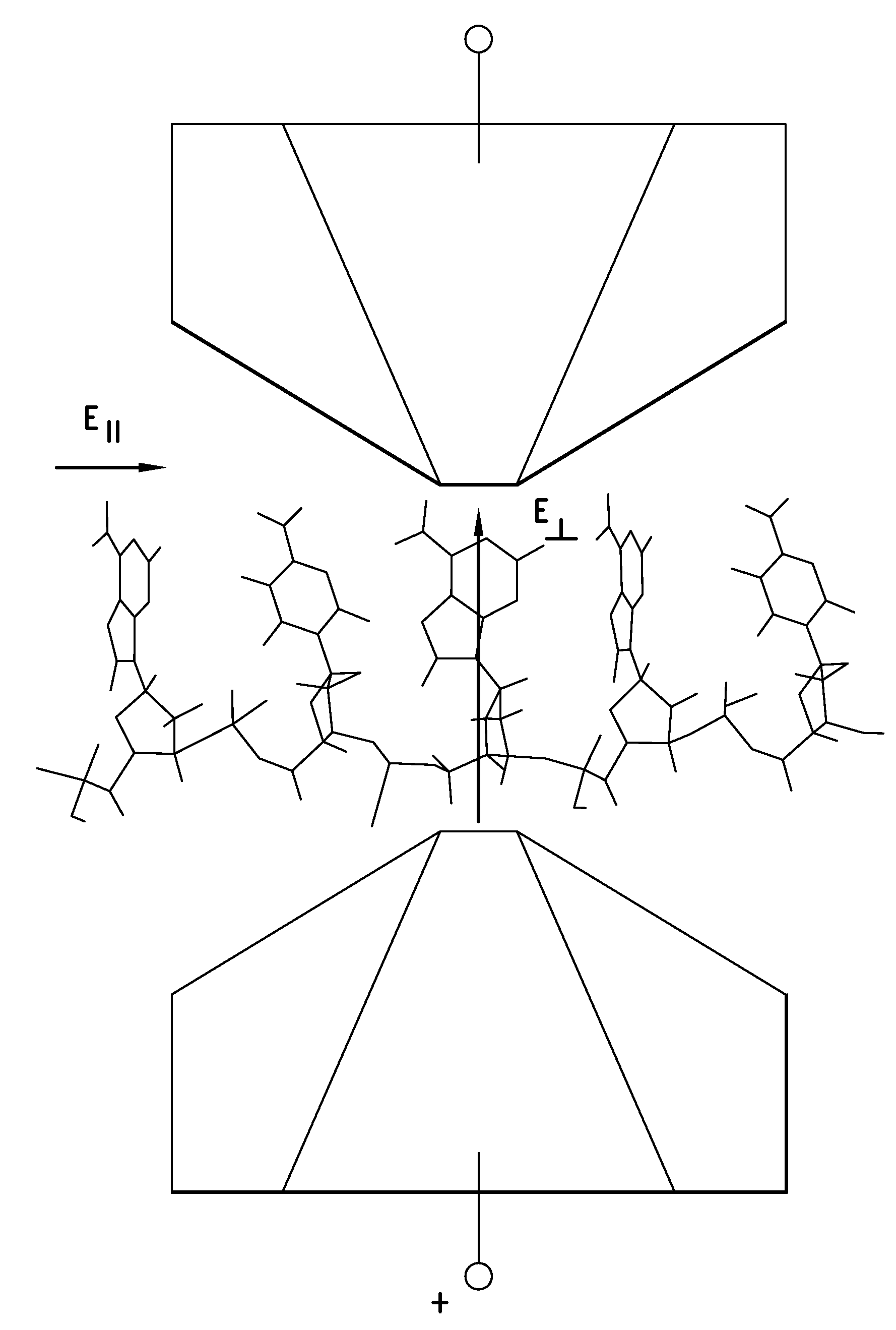Devices and Methods for Target Molecule Characterization
a technology of target molecule and device, applied in the field of systems, devices and methods for identifying biopolymers, can solve the problems of limiting the length of extensions, difficult to retrieve complexity, and the complexity of the chemistry required to do so
- Summary
- Abstract
- Description
- Claims
- Application Information
AI Technical Summary
Benefits of technology
Problems solved by technology
Method used
Image
Examples
example 1
Electrode-Tethered Guanidinium Ions can be Used to Complete an Electrical Circuit for “Reading” Bases in Single Stranded DNA
[0208]Hydrogen bonds are the molecular “Velcro” on which much of the reversible and chemically-specific bonding in biology is based.186 It has recently been shown that hydrogen bonds can also enhance electron transport significantly,12,90 observations that suggest a basis for a new type of electrical biosensor. This sensor would use two sets of hydrogen bonds to complete an electrical circuit by simultaneously binding two independent sites on a target molecule.
[0209]Electrical contacts to DNA are currently made by means of covalent modifications187 but it is possible to form “generic” hydrogen bonds to DNA by means of an interaction between the backbone phosphates and guanidinium ions.188 This then allows the construction of a “molecular sandwich” consisting of hydrogen bonded contacts to DNA via the phosphates on one side and a base on the other side as illust...
example 2
[0216]A readable signal is obtainable if the circuit is completed using a complementary DNA as second connector. Transport measurements were carried out on the DNA adlayers using gold STM probes insulated with polyethylene, functionalizing the exposed gold apex with a thiolated nucleobase.90 Either 8-mercaptoguanine (G) or 8-mercatpto-2 aminoadenine (2AA) was used. 2AA was chosen because it can form three hydrogen bonds with thymine.181
[0217]Examples of conductance vs. retraction-distance (1-Z) curves taken with these functionalized probes are given in FIGS. 34A-F, with the vertical line in each figure denoted the 1 nm distance mark. The green lower curves 340g in FIGS. 34C-34F are control data taken using bare gold probes. All of the experimental data taken in a successful run have been overlaid with no pre-selection of the curves. When no DNA is present, G and 2AA probes yield decay curves 340b over guanidinium (all curves in FIGS. 34A and B) similar to those obtained with bare p...
PUM
| Property | Measurement | Unit |
|---|---|---|
| force | aaaaa | aaaaa |
| voltage | aaaaa | aaaaa |
| driving free-energy | aaaaa | aaaaa |
Abstract
Description
Claims
Application Information
 Login to View More
Login to View More - R&D
- Intellectual Property
- Life Sciences
- Materials
- Tech Scout
- Unparalleled Data Quality
- Higher Quality Content
- 60% Fewer Hallucinations
Browse by: Latest US Patents, China's latest patents, Technical Efficacy Thesaurus, Application Domain, Technology Topic, Popular Technical Reports.
© 2025 PatSnap. All rights reserved.Legal|Privacy policy|Modern Slavery Act Transparency Statement|Sitemap|About US| Contact US: help@patsnap.com



